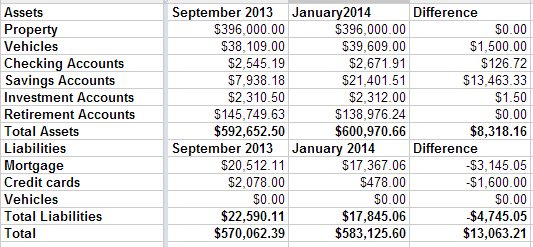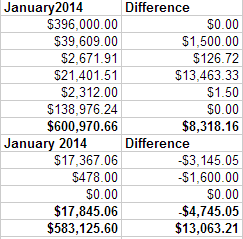- Freedom is that instant between when someone tells you to do something and when you decide how to respond. #
- RT @keepinspiringme: Win a Canon EOS 450D SLR camera by simply tweeting the #kimcanon hashtag. #
- RT @mbhunter Carnival of Personal Finance: Parts-of-speech abuse edition http://bit.ly/7cyAqV #
- Note to self: While misusing the faucet sprayer may make me giggle, my wife is not so appreciative. #
- RT @copyblogger On Dying, Mothers, and Fighting for Your Ideas http://bit.ly/7gZgW3 #
- Blackberry? Good or Evil? #
- Round 1: Me v Snow. Winner: Me. #
- RT @The_Weakonomist: Men, I've learned that in relationships, you can be happy, or you can be right. #
Privacy Policy
Privacy Policy for LiveRealNow.net
The privacy of our visitors to LiveRealNow.net is important to us.
At LiveRealNow.net, we recognize that privacy of your personal information is important. Here is information on what types of personal information we receive and collect when you use and visit LiveRealNow.net, and how we safeguard your information. We never sell your personal information to third parties.
Spam
No spam, ever!
Log Files
As with most other websites, we collect and use the data contained in log files. The information in the log files include your IP (internet protocol) address, your ISP (internet service provider, such as AOL or Shaw Cable), the browser you used to visit our site (such as Internet Explorer or Firefox), the time you visited our site and which pages you visited throughout our site.
Cookies and Web Beacons
We do use cookies to store information, such as your personal preferences when you visit our site. This could include only showing you a popup once in your visit, or the ability to login to some of our features, such as forums.
We also use third party advertisements on LiveRealNow.net to support our site. Some of these advertisers may use technology such as cookies and web beacons when they advertise on our site, which will also send these advertisers (such as Google through the Google AdSense program) information including your IP address, your ISP , the browser you used to visit our site, and in some cases, whether you have Flash installed. This is generally used for geotargeting purposes (showing New York real estate ads to someone in New York, for example) or showing certain ads based on specific sites visited (such as showing cooking ads to someone who frequents cooking sites).
You can chose to disable or selectively turn off our cookies or third-party cookies in your browser settings, or by managing preferences in programs such as Norton Internet Security. However, this can affect how you are able to interact with our site as well as other websites. This could include the inability to login to services or programs, such as logging into forums or accounts.
Net Worth Update – January 2014
This may be the most boring type of post I write, but it’s important to me to track my net worth so I can see my progress. We are sliding smoothly from debt payoff mode to wealth building mode.
Our highlights right now are nothing to speak of. We did let our credit card grow a little bit over the last couple of months, but paid it off completely at the end of December. It grew mostly as a matter of not paying attention while we were doing our holiday shopping and dealing with some car repairs.
That’s it. We haven’t remodeled our bathrooms yet, but we have the money sitting in a savings account, waiting for the contractor. We haven’t bought a pony yet, but we did decide that a hobby farm wouldn’t be the right move for us. We’ll be boarding the pony instead of moving, at least for the foreseeable future.
Our net worth is up $13,000 since September. Our savings are up and our retirement accounts are down because there are two inherited IRAs that we need to slowly cash out and convert to regular IRAs.

All About Tax-Sheltered Annuity Plans
This is a guest post.
If you’ve previously heard of tax-sheltered annuity plans but are unsure of what they are, let this guide help you. Here’s what you need to know about tax-sheltered annuity plans.
What is it?
First things first, what are tax-sheltered annuity plans? A tax-sheltered annuity plan, or a 403(b) plan, is a retirement plan for some employees of various institutions to participate. This plan allows employees to contribute a portion of their salary to the plan. The employer may also contribute to the employee’s plan.
Who is Eligible?
Eligible Code Section 501(c)(3) employees tax-exempt organizations may participate, an employee of a public school, a state college, or a university, and eligible employees of churches. Employees of public school systems organized by Indian tribal governments, Ministers employed by Code Section (501)(c)(3) organizations, and self-employed ministers may also participate. Ministers must be employed by organizations that are not Code Section 501(c)(3) tax-exempt organizations, and they must function as ministers in their day-to-day professional responsibilities with their employers.
What are the Benefits of a 403(b) plan?
In a 403(b) plan, contributions are tax deductible. Taxes are paid on distributions in retirement, which is when a lot of people are in a lower tax bracket. As mentioned earlier, employers can match 403(b) contributions on a pretax basis. Loans can be taken against a 403(b) plan, which will help in certain situations, like buying your first home.
What types of contributions can be made?
In a 403(b) plan, you can have several types of contributions:
- Elective Deferrals – These are contributions made by the employee under a salary reduction agreement. This allows an employer to withhold a certain amount of money from an employee’s salary to deposit it in their 403(b) account.
- Nonelective Employer Contributions – These are any contributions to the 403(b) plan that were not made under a salary reduction agreement, which include matching contributions, discretionary contributions, and certain mandatory contributions that were made by the employer. The employee will pay income tax on all of these contributions, but only when they’re withdrawn.
- After-Tax Contributions – These are contributions made by an employee, which are reported as compensation in the year they were contributed and are included in the employee’s gross income for income tax purposes.
- Designated Roth contributions – These are elective deferrals that the employees elects to include in their gross income. The plan must keep separate accounting records for all contributions and for all gains and losses in the designated Roth account.
Can Employees Exclude Employees From Contributing?
Absolutely. The 403(b) plan must allow allow employees to make elective deferrals under the plan, but under the universal availability rule, if the employer permits one employee to defer salary by contributing it to a 403(b) plan, they must extend the offer to all of their employees. The only exceptions are employees who would contribute less than $200 annually, those employees who work less than 20 hours a week, employees who participate in a 401(k) or 457(b) plan, or students performing services that are described in Code Section 3121(b)(10).
So When Can Employees Get the Dollars?
Employees may withdraw from the 403(b) plan when the reach the age of 59 and a half, have a severance from employment, have a financial hardship, or become disabled. Money can also be taken out if an employee passes away. The employee will have to pay taxes on the amount of the distribution that was not from designated Roth or after-tax contributions, and they may have to pay an additional ten percent early distribution tax.
Are There Rules for In-Service Transfers or Exchanges?
Yes. Contract exchanges with a non-payroll slot vendor are permitted only if the plan permits it, the accumulated benefit after the exchange is, at the very least, the same as before the exchange, if the employer and the non-payroll slot vendor agree to share information regarding the plan’s terms, if any pre-exchange benefit restrictions are maintained after the exchange, and if the vendor complies with the terms outlined in the plan.
How Much Can be Contributed Annually? Does the Employee Have to be Current?
As of 2013, the maximum combined amount that an employer and an employee can contribute to a 403(b) plan is $51,000. That number may go up, depending on the annual cost-of-living.
If the plan allows, an employer can contribute up to the annual limits for an employee’s account for up to five years after the date of severance. No portion of the contributions can come from money that was due to be paid to the former employee, and these contributions must cease if the employee passes away.
There’s much more to learn about a 403(b) plan, but these are the basics. Does your company have a 403(b) plan?
Meal Plans
- Image by Getty Images via @daylife
When we don’t have a meal plan, food costs more.
Our regular plan is to build a menu for the week and go to the grocery store on Sunday. This allows planning, instead of scrambling for a a meal after work each night. It also give us a chance to plan for leftovers so we have something to eat for lunch at work.
We work until about 5 every weekday. When we don’t have the meal planned, it’s usually chicken nuggets or hamburger helper for dinner. Not only is that repetitive, but it’s not terribly healthy. It is, however, convenient. If we plan for it, we can get the ingredients ready the night before and know what we are doing when we get home, instead of trying to think about it after a long day of work.
If we don’t plan for leftovers, we tend to make the right amount of food for the family. When this happens, there’s nothing to bring to work the next day, which means I’ll be hungry about lunchtime with nothing I can do about it except buy something. Buying lunch is never cheaper than making it. I can get a sandwich at Subway for $5, but I could make a sandwich just as tasty and filling for less than half of that, using money that is meant to be used for food. All during wrestling season, we make 30-inch sandwiches on meet nights for a cost of about $5, feeding ourselves and at least a couple of others who didn’t have time to make their dinner before the 5:30 meet.
No leftovers also means no Free Soup, which is a wonderful low-maintenance meal that leaves everybody full. Nobody ever gets bored of Free Soup. (Hint: Don’t ever put a piece of fish in the Free Soup, or the flavor will take over the entire meal.)
Unhealthy, repetitive food for dinner. Over-priced, low-to-middle-quality food for lunch.
OR
We plan our meals right and have inexpensive, healthy food that doesn’t get boring for every meal.
It seems to be a no-brainer. Except, I don’t have lunch today because we didn’t plan our meals and used the last of the leftover hamburger helper for dinner last night.
Update: This post has been included in the Carnival of Personal Finance.
Sunday Roundup
My girls have been riding in horse shows lately. Sometimes, it seems like that’s all we’ve been doing on the weekends, but they love it. My wife’s favorite hobby now matches my daughters’ favorite pastime. As a bonus, we’ll never have to paint their room again, with the way they are accumulating ribbons.
Best Posts
It is possible to be entirely too connected.
My life is now complete. It’s possible to buy 95 pounds of cereal marshmallows for just $399. Breakfast at my house just got perfect.
I wholeheartedly agree with Tam, “You don’t need to make any excuses for crashing things into each other at the speed of light in an underground tunnel longer than Manhattan that’s had the air pumped out and been chilled to a couple degrees above absolute zero. That doesn’t need a reason. “
Carnivals I’ve Rocked
Credit Cards: My Failed Experiment was included in the Best of Money Carnival, the Carnival of Wealth, and the Totally Money Blog Carnival.
My niche site article on how to Make Extra Money with Keyword Research was included in the Totally Money Blog Carnival.
Thank you! If I missed anyone, please let me know.




